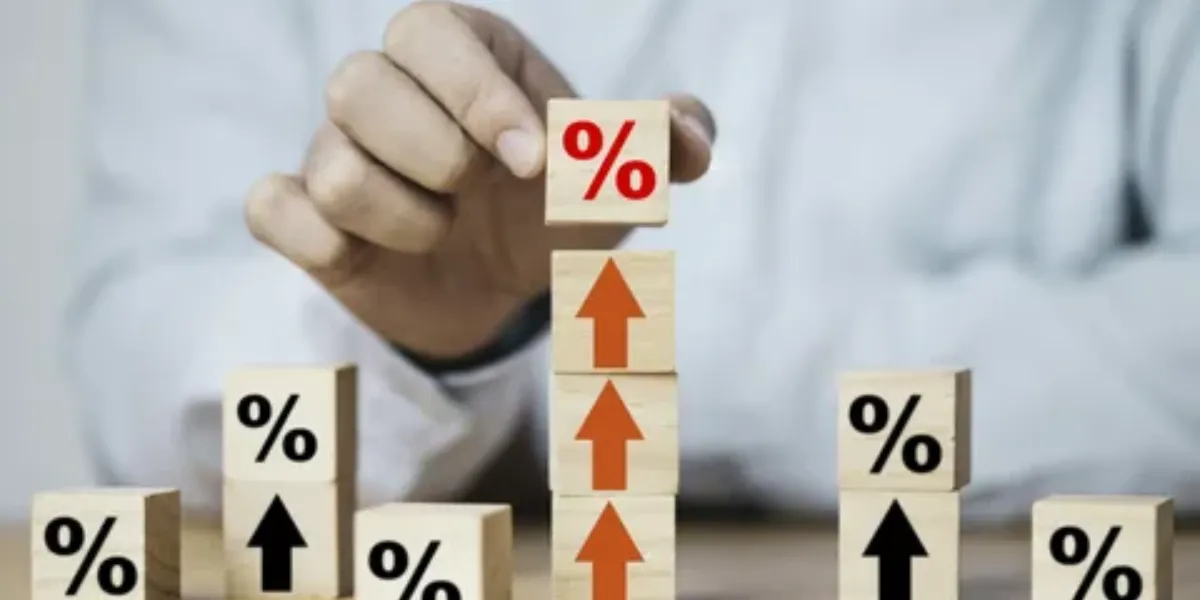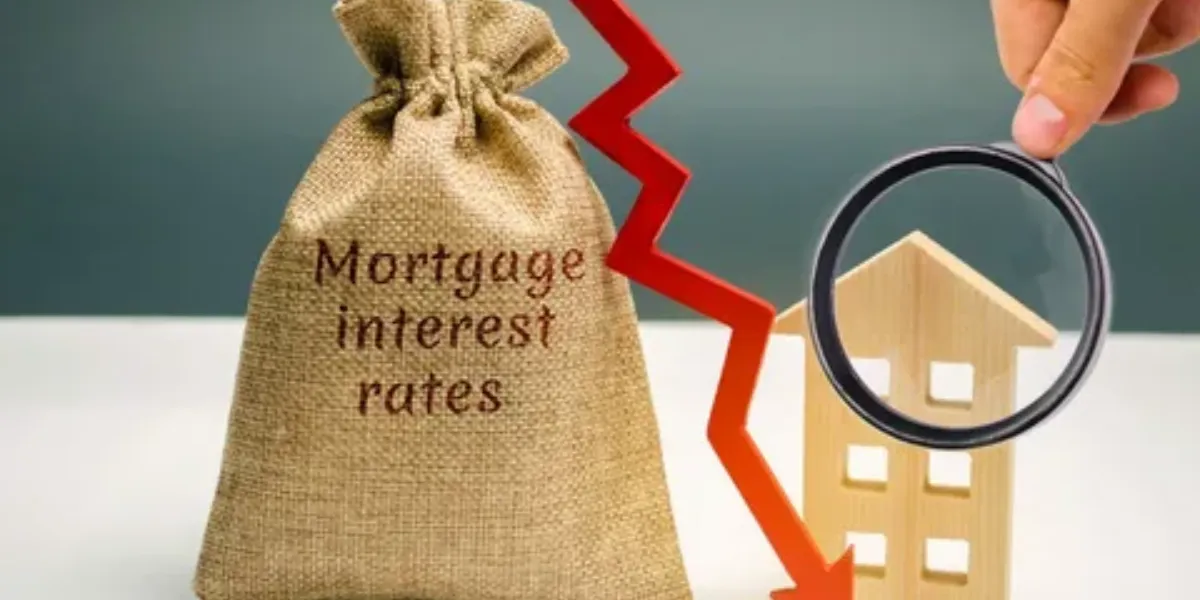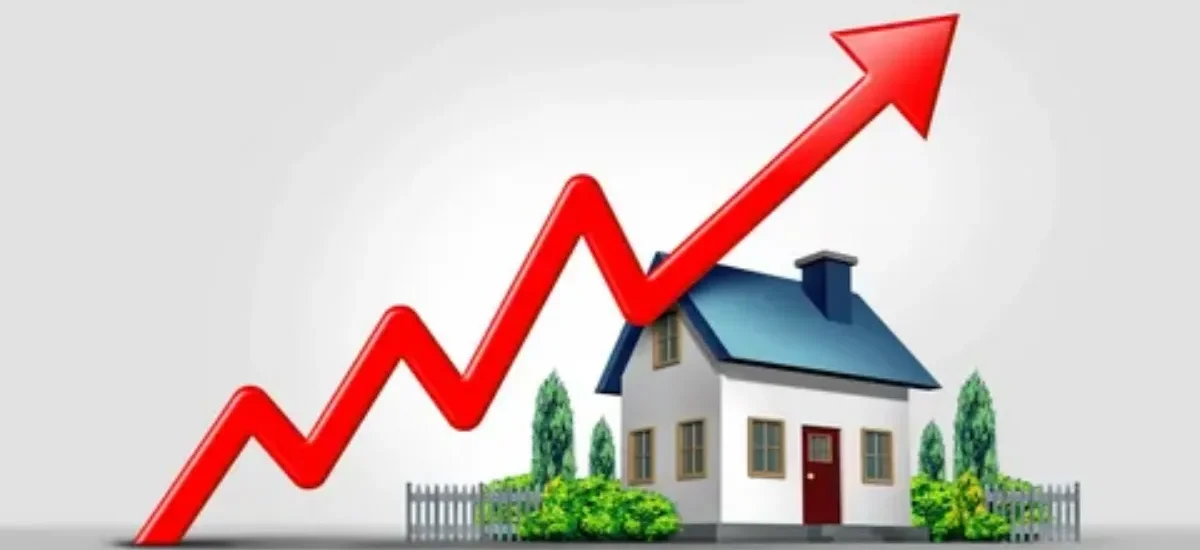Understanding the Impact of Rising Interest Rates on Your Mortgage
Interest rates are a crucial factor in determining the cost of your mortgage. When interest rates rise, it can have a significant impact on both new and existing mortgages. Here’s a detailed look at how rising interest rates affect your mortgage:
Monthly Mortgage Payments
The most immediate effect of rising interest rates is an increase in monthly mortgage payments. For adjustable-rate mortgages (ARMs), rates are periodically adjusted based on a benchmark rate. As interest rates go up, so do the payments on ARMs. For fixed-rate mortgages, while the rate remains constant, new borrowers will face higher rates, leading to higher monthly payments compared to when rates were lower.
Loan Affordability
Higher interest rates reduce the amount of money borrowers can afford to spend on a home. As monthly payments increase, borrowers may need to lower their purchase price or make a larger down payment to qualify for a mortgage. This can impact first-time homebuyers the most, as their budgets are often more constrained.
Home Equity
For those with existing fixed-rate mortgages, rising interest rates do not affect their current monthly payments, but they can influence home equity. Higher rates can lead to a slowdown in housing price growth or even declines in some markets, reducing the home equity that homeowners accumulate over time.
Refinancing Options
Rising interest rates can make refinancing less attractive. Homeowners who previously locked in low rates may find it unappealing to refinance at higher rates. This can limit opportunities to reduce monthly payments or access home equity through cash-out refinancing.
Investment and Market Dynamics
Interest rates influence broader economic conditions. When rates rise, borrowing costs increase not only for mortgages but also for other forms of credit, such as personal loans and credit cards. This can lead to reduced consumer spending and slower economic growth, which can indirectly impact the housing market.
Fixed vs. Variable Rate Mortgages
Choosing between a fixed-rate and a variable-rate mortgage becomes more critical in a rising rate environment. Fixed-rate mortgages provide stability with constant payments, while variable-rate mortgages may start with lower rates but can become more expensive as rates rise. Borrowers must weigh the initial savings against potential future increases.
Loan Qualification and Approval
Higher interest rates can also affect mortgage approval. Lenders may tighten qualification criteria, as higher rates increase the risk of borrower default. This can result in stricter income, credit score, and down payment requirements.
Long-Term Financial Planning
Homeowners need to consider the long-term implications of rising interest rates on their overall financial plan. Higher rates can lead to increased mortgage payments, impacting budgets and savings goals. It’s essential to plan for these potential increases to avoid financial strain.
Preparing for Future Rate Hikes
Being proactive about rising interest rates can help homeowners mitigate their impact. Strategies include paying down existing debt, improving credit scores to secure better rates, and considering rate locks when purchasing a home to protect against future rate increases.
Conclusion
Understanding how rising interest rates impact your mortgage is crucial for both current homeowners and prospective buyers. By staying informed and preparing for rate hikes, you can make better financial decisions and manage your mortgage more effectively in a changing economic landscape.
How Rising Interest Rates Affect Monthly Mortgage Payments

Rising interest rates can have a significant impact on monthly mortgage payments. This effect varies depending on the type of mortgage you have and the terms of your loan. Here’s a detailed look at how rising interest rates affect monthly mortgage payments:
Fixed-Rate Mortgages
With a fixed-rate mortgage, the interest rate remains constant throughout the life of the loan. However, rising interest rates can affect these mortgages in several ways:
New Fixed-Rate Mortgages: When interest rates rise, new borrowers will face higher rates than those who secured their mortgages when rates were lower. This means that the monthly payments on new fixed-rate mortgages will be higher compared to loans taken out during periods of lower interest rates.
Refinancing: Homeowners with existing fixed-rate mortgages may find it less advantageous to refinance when interest rates rise. Refinancing to a higher rate would increase their monthly payments, making it less appealing unless they need to access equity or change the loan term for other reasons.
Adjustable-Rate Mortgages (ARMs)
Adjustable-rate mortgages have interest rates that can change periodically based on a benchmark interest rate or index. Rising interest rates have a more direct and immediate impact on ARMs:
Rate Adjustments: When the benchmark rate increases, the interest rate on an ARM also rises at the adjustment period (often annually or semi-annually). This results in higher monthly payments for the borrower.
Initial Rate Period: Many ARMs have a fixed-rate period at the beginning (e.g., 5/1 ARM means a fixed rate for the first five years). After this period, the rate adjusts based on the current interest rates. If rates have risen, the new adjusted rate will be higher, leading to increased monthly payments.
Impact on Loan Amount and Home Affordability
Higher interest rates generally lead to higher monthly payments for any given loan amount. This impacts what borrowers can afford:
Loan Amount: As interest rates rise, the amount of loan a borrower can qualify for decreases. This is because lenders calculate the maximum loan amount based on what the borrower can afford to pay each month. Higher interest rates mean higher monthly payments for the same loan amount, reducing the overall loan a borrower can obtain.
Affordability: Potential homebuyers might need to look for less expensive homes or increase their down payment to offset the higher monthly payments caused by rising interest rates. This can make it more challenging for first-time homebuyers or those with limited budgets.
Long-Term Financial Implications
The effects of rising interest rates extend beyond immediate monthly payments:
Total Interest Paid: Over the life of the loan, higher interest rates result in a higher total amount of interest paid. This increases the overall cost of the home, making it more expensive in the long run.
Budgeting: Higher monthly payments can strain a homeowner’s budget, affecting their ability to save for other goals, such as retirement or children’s education. It may also limit their capacity to handle unexpected expenses or emergencies.
Equity Growth: With higher interest rates, a larger portion of each payment goes towards interest rather than principal. This slows the rate at which homeowners build equity in their homes.
Conclusion
Rising interest rates have a significant impact on monthly mortgage payments, affecting both new and existing borrowers. For fixed-rate mortgages, the effect is primarily seen in new loans and refinancing decisions, while adjustable-rate mortgages experience more immediate changes in payments. Higher rates also influence loan amounts, home affordability, and long-term financial planning. Understanding these impacts helps borrowers make informed decisions and prepare for changes in the interest rate environment.
Strategies to Mitigate the Effects of Higher Interest Rates on Your Mortgage

Rising interest rates can significantly impact your mortgage payments, but there are several strategies you can employ to mitigate these effects. By taking proactive steps, you can manage your mortgage more effectively and reduce the financial burden of higher rates. Here’s a comprehensive guide to strategies that can help:
Refinancing to a Fixed-Rate Mortgage
One effective strategy is refinancing from an adjustable-rate mortgage (ARM) to a fixed-rate mortgage. This locks in your interest rate, protecting you from future rate increases:
Stability: A fixed-rate mortgage provides predictable monthly payments, making budgeting easier.
Long-Term Savings: While the initial rate may be higher than current adjustable rates, it can save money in the long run if interest rates continue to rise.
Making Extra Payments
Making extra payments towards your mortgage principal can reduce the impact of rising interest rates:
Principal Reduction: Paying down the principal faster reduces the amount of interest you pay over the life of the loan.
Interest Savings: The sooner you reduce the principal, the less interest accrues, especially beneficial if you have an ARM.
Shortening the Loan Term
Refinancing to a shorter loan term, such as from a 30-year to a 15-year mortgage, can also mitigate the effects of higher interest rates:
Lower Rates: Shorter-term loans typically have lower interest rates than longer-term ones.
Equity Build-Up: You build equity faster with a shorter-term loan, which can be beneficial if you need to access home equity in the future.
Improving Your Credit Score
A higher credit score can qualify you for better mortgage rates:
Lower Interest Rates: Lenders offer lower rates to borrowers with higher credit scores.
Better Loan Terms: Improved credit can also result in more favorable loan terms, reducing overall costs.
Shopping Around for the Best Rates
Don’t settle for the first mortgage offer you receive. Shopping around can help you find the best rates and terms available:
Compare Lenders: Different lenders offer varying rates and fees. Compare multiple lenders to find the best deal.
Negotiate: You may be able to negotiate better terms, especially if you have a strong credit profile.
Considering a Larger Down Payment
A larger down payment reduces the loan amount and can lead to better loan terms:
Lower Monthly Payments: A smaller loan amount results in lower monthly payments.
Interest Savings: You’ll pay less interest over the life of the loan with a smaller principal.
Utilizing Rate Locks
When interest rates are rising, consider locking in your rate when you find a favorable one:
Rate Lock: A rate lock guarantees your interest rate for a specified period, protecting you from rate increases while your loan is processed
Exploring Government Programs
Various government programs can assist in securing favorable mortgage terms:
FHA Loans: Federal Housing Administration (FHA) loans often offer lower interest rates and more lenient qualification requirements.
VA Loans: Veterans Affairs (VA) loans provide competitive rates and no down payment for eligible veterans.
Maintaining Financial Stability
Lenders prefer financially stable borrowers. Maintain stable employment, manage debt responsibly, and avoid major financial changes during the loan application process:
Debt-to-Income Ratio: Keep your debt-to-income ratio low to improve your mortgage application profile.
Consistent Income: Stable employment and consistent income reassure lenders of your ability to make payments.
Consulting with a Financial Advisor
A financial advisor can provide personalized strategies to manage your mortgage and overall financial health in a rising interest rate environment:
Customized Advice: Receive tailored advice based on your specific financial situation.
Long-Term Planning: Develop a comprehensive plan to manage your mortgage and other financial goals.
Conclusion
Rising interest rates can pose challenges for mortgage borrowers, but with proactive strategies, you can mitigate their impact. Refinancing, making extra payments, improving your credit score, and exploring different loan options are just a few ways to manage higher rates effectively. By staying informed and taking strategic actions, you can protect your financial well-being and navigate the challenges of a rising interest rate environment.
Fixed vs. Variable Mortgages: Which is Better in a Rising Rate Environment?
Choosing between a fixed-rate and a variable-rate mortgage is a critical decision, especially in a rising interest rate environment. Each type of mortgage has its own set of advantages and potential drawbacks. Understanding these can help you make an informed decision that aligns with your financial situation and goals. Here’s a detailed comparison to help you decide which is better in a rising rate environment:
Fixed-Rate Mortgages
Definition: A fixed-rate mortgage has an interest rate that remains constant throughout the life of the loan, typically 15, 20, or 30 years.
Advantages:
Predictable Payments: The biggest advantage is the stability and predictability of monthly payments. This makes budgeting easier as you know exactly what your payment will be each month.
Protection from Rate Increases: In a rising rate environment, a fixed-rate mortgage shields you from future interest rate hikes, providing financial security and peace of mind.
Long-Term Planning: Fixed rates facilitate long-term financial planning since your mortgage costs remain constant over time.
Disadvantages:
Higher Initial Rates: Fixed-rate mortgages often start with higher interest rates compared to variable-rate mortgages. This means higher initial monthly payments.
Potentially Higher Lifetime Costs: If interest rates were to decrease significantly in the future, you could end up paying more in interest over the life of the loan compared to a variable-rate mortgage.
Variable-Rate Mortgages (ARMs)
Definition: An adjustable-rate mortgage (ARM) has an interest rate that can change periodically based on an index or benchmark rate, such as the LIBOR or the prime rate. ARMs typically start with a lower fixed rate for a certain period (e.g., 5, 7, or 10 years) before adjusting.
Advantages:
Lower Initial Rates: ARMs generally offer lower initial interest rates compared to fixed-rate mortgages. This can result in lower initial monthly payments.
Initial Savings: The lower initial rates can be advantageous if you plan to sell the home or refinance before the adjustment period ends.
Potential Decreases: If interest rates decrease, your monthly payments could go down during the adjustment periods.
Disadvantages:
Payment Uncertainty: The main disadvantage is the potential for your interest rate and monthly payments to increase after the initial fixed-rate period, leading to financial uncertainty.
Complexity: ARMs are more complex than fixed-rate mortgages, with varying terms and conditions that can be difficult to understand. This complexity can make it harder to predict future costs.
Which is Better in a Rising Rate Environment?
Fixed-Rate Mortgages:
Best for Stability: If you prefer stability and predictability in your mortgage payments and plan to stay in your home for a long time, a fixed-rate mortgage is generally better in a rising rate environment. It protects you from future rate hikes and provides long-term financial security.
Long-Term Planning: For those looking to make long-term financial plans without worrying about fluctuating mortgage payments, fixed rates offer a significant advantage.
Variable-Rate Mortgages:
Initial Cost Savings: If you anticipate that you will not stay in the home for long or plan to refinance before the adjustable period begins, an ARM can offer lower initial payments. This can be beneficial for short-term savings or if you expect your financial situation to improve in the near future, allowing you to handle potential rate increases later.
Risk Tolerance: If you have a higher tolerance for risk and can afford potential increases in payments, an ARM might still be worth considering. However, it requires careful monitoring of market conditions and financial planning to ensure you can handle future adjustments.
Conclusion
In a rising rate environment, fixed-rate mortgages generally offer more security and predictability, making them the better choice for most borrowers who prioritize stability and long-term planning. However, variable-rate mortgages can be beneficial for those who are confident in their ability to manage potential rate increases or plan to move or refinance within a few years. Assessing your financial situation, risk tolerance, and future plans is essential to making the best decision for your mortgage needs.
Refinancing Your Mortgage: Is It Worth It When Rates Are Rising?

Refinancing your mortgage involves replacing your existing home loan with a new one, often to secure a lower interest rate, reduce monthly payments, change the loan term, or tap into home equity. When interest rates are rising, refinancing can seem less attractive, but there are still situations where it might be beneficial. Here’s a detailed analysis to help you determine if refinancing is worth it in a rising rate environment:
Why Consider Refinancing?
Lower Monthly Payments: By securing a lower interest rate, you can reduce your monthly mortgage payments, freeing up cash for other expenses or investments.
Shorter Loan Term: Refinancing to a shorter loan term can help you pay off your mortgage faster and save on interest over the life of the loan.
Accessing Home Equity: Cash-out refinancing allows you to tap into your home equity to fund home improvements, consolidate debt, or cover other large expenses.
Switching Loan Types: Moving from an adjustable-rate mortgage (ARM) to a fixed-rate mortgage can provide stability in monthly payments, especially if you anticipate further rate increases.
Factors to Consider in a Rising Rate Environment
Current Interest Rates vs. New Rates: Compare your current mortgage rate with the new rates available. Even in a rising rate environment, the new rate might still be lower than your existing rate, especially if you secured your original mortgage at a higher rate.
Break-Even Point: Calculate the break-even point, which is the time it takes for the savings from the lower monthly payments to cover the costs of refinancing (closing costs, fees, etc.). If you plan to stay in your home beyond this point, refinancing may be worthwhile.
Closing Costs: Refinancing comes with closing costs, which can be significant. Ensure that the long-term savings outweigh these upfront expenses.
Loan Term: Refinancing to a longer loan term can lower monthly payments but may increase the total interest paid over the life of the loan. Conversely, a shorter term can increase monthly payments but reduce total interest costs.
Benefits of Refinancing in a Rising Rate Environment
Locking in a Fixed Rate: If you have an ARM, refinancing to a fixed-rate mortgage can protect you from future rate hikes, providing stability and predictability in your monthly payments.
Consolidating Debt: Refinancing to access home equity can allow you to consolidate high-interest debt (such as credit cards or personal loans) into a single, lower-interest payment.
Improved Credit Score: If your credit score has improved since you took out your original mortgage, you might qualify for better rates even if market rates have risen.
Potential Drawbacks
Higher Interest Rates: If current rates are significantly higher than your existing mortgage rate, refinancing might not be beneficial. Higher rates could negate any potential savings.
Increased Total Interest: Extending the loan term through refinancing can lead to paying more interest over the life of the loan, even if monthly payments are reduced.
Upfront Costs: The closing costs associated with refinancing can be substantial, potentially offsetting the benefits of lower monthly payments.
Scenarios Where Refinancing Makes Sense
Refinancing from ARM to Fixed-Rate: If you have an ARM and are concerned about rising rates, refinancing to a fixed-rate mortgage can provide long-term stability.
Debt Consolidation: If you have significant high-interest debt, using a cash-out refinance to consolidate debt can reduce your overall interest expenses.
Improved Financial Situation: If your credit score or financial situation has improved since you obtained your original mortgage, you might qualify for better rates despite the rising interest rate environment.
Conclusion
Refinancing your mortgage in a rising rate environment requires careful consideration of your financial situation, current and potential future interest rates, and the costs associated with refinancing. While higher rates can make refinancing seem less attractive, there are scenarios where it can still be beneficial, such as converting an ARM to a fixed-rate mortgage, consolidating debt, or leveraging an improved credit score for better terms. Conducting a thorough analysis of the break-even point and long-term financial implications will help you determine if refinancing is worth it for your specific circumstances.
The Long-Term Financial Implications of Rising Mortgage Rates
Rising mortgage rates have far-reaching effects that go beyond just the immediate increase in monthly payments. They can influence various aspects of personal and financial life over the long term, from home affordability to overall economic conditions. Here’s a detailed exploration of the long-term financial implications of rising mortgage rates:
Higher Monthly Payments
The most direct impact of rising mortgage rates is an increase in monthly payments:
Budget Constraints: Higher payments can strain household budgets, reducing disposable income and limiting spending on other necessities or luxuries.
Financial Stress: Increased payments can lead to financial stress, especially for those on fixed incomes or with tight budgets.
Home Affordability
Rising rates decrease the affordability of homes:
Reduced Purchasing Power: Higher interest rates mean higher monthly payments for the same loan amount, reducing the purchasing power of prospective buyers.
Downsizing: Buyers might have to consider smaller homes or less desirable locations to stay within their budgets.
Delayed Homeownership: Some potential buyers may delay purchasing a home, waiting for a more favorable interest rate environment, which can impact long-term financial goals.
Impact on Home Prices
Higher mortgage rates can affect home prices:
Slower Price Growth: As borrowing costs increase, demand for homes may decrease, leading to slower home price appreciation.
Market Corrections: In some cases, home prices may even decline if the market adjusts to reduced demand, impacting homeowners’ equity and net worth.
Refinancing Challenges
Rising interest rates make refinancing less attractive:
Higher Refinance Rates: Homeowners looking to refinance may face higher rates than their original loans, negating potential savings.
Cost of Refinancing: Even if refinancing could lower monthly payments by extending the loan term, the long-term interest costs may increase.
Long-Term Interest Costs
Over the life of a mortgage, higher rates significantly increase total interest costs:
Increased Total Payments: Borrowers will pay substantially more in interest over the loan term, increasing the overall cost of homeownership.
Equity Building: Higher interest rates slow down the rate at which homeowners build equity, as more of each payment goes towards interest rather than principal.
Impact on Investment and Savings
Higher mortgage payments can affect other financial goals:
Reduced Savings: Increased mortgage payments can limit the ability to save for retirement, education, or other financial goals.
Investment Choices: Less disposable income may result in reduced investment in other asset classes, impacting long-term wealth accumulation.
Housing Market Dynamics
The broader housing market can also be affected:
Reduced Demand: Higher rates can decrease overall demand for housing, affecting construction activity and related industries.
Inventory Levels: Sellers might be less inclined to list their homes if they have low-rate mortgages, reducing market inventory and potentially keeping prices higher.
Economic Impact
Rising mortgage rates can influence the broader economy:
Consumer Spending: With more income allocated to mortgage payments, consumer spending on other goods and services may decrease, slowing economic growth.
Investment Shifts: Investors might shift their focus from real estate to other asset classes perceived as offering better returns in a high-interest-rate environment.
Strategic Financial Planning
Homeowners and buyers need to adapt their financial strategies:
Rate Locks: Prospective buyers might consider locking in rates to protect against future increases.
Extra Payments: Making extra payments towards the principal can reduce total interest costs over time.
Diversified Investments: Maintaining a diversified investment portfolio can help offset the financial impact of higher mortgage rates.
Impact on Home Equity Loans and Lines of Credit
Rising rates also affect home equity loans and lines of credit (HELOCs):
Increased Costs: Higher rates mean higher costs for borrowing against home equity.
Budget Impact: Homeowners relying on HELOCs for major expenses or debt consolidation may face higher payments, impacting their overall financial health.
Conclusion
The long-term financial implications of rising mortgage rates are multifaceted, affecting not just immediate housing costs but also overall financial health and economic conditions. Home affordability, home prices, refinancing opportunities, and broader economic impacts all come into play. Understanding these implications helps homeowners, prospective buyers, and investors make informed decisions and strategically plan for a future in which interest rates may continue to rise. By adjusting financial strategies, such as prioritizing savings, making extra payments, and considering rate locks, individuals can mitigate some of the adverse effects of rising mortgage rates on their long-term financial well-being.
Preparing for Interest Rate Hikes: What Homeowners Need to Know

Preparing for interest rate hikes is crucial for homeowners to maintain financial stability and effectively manage their mortgages. As interest rates impact monthly payments and overall financial planning, understanding how to prepare for potential rate increases is essential. Here’s a comprehensive guide on what homeowners need to know:
Monitor Market Trends
Stay informed about economic indicators and forecasts that influence interest rates:
Federal Reserve Policies: The Federal Reserve’s decisions on monetary policy, including changes to the federal funds rate, directly impact mortgage rates.
Economic Reports: Pay attention to economic reports such as employment numbers, inflation rates, and GDP growth, as these factors influence interest rate movements.
Market Sentiment: Investor sentiment and geopolitical events can also affect interest rates, leading to fluctuations in mortgage rates.
Understand Mortgage Terms and Conditions
Review your current mortgage terms and conditions:
Type of Mortgage: Know whether you have a fixed-rate mortgage or an adjustable-rate mortgage (ARM). Understand how rate changes will affect your payments.
Interest Rate Adjustment: For ARMs, familiarize yourself with the terms of interest rate adjustments, including frequency and caps on rate increases.
Evaluate Financial Readiness
Assess your financial situation to determine readiness for potential rate hikes:
Budget Analysis: Review your monthly budget to understand how an increase in mortgage payments would impact your overall financial stability.
Emergency Fund: Maintain an emergency fund to cover unexpected expenses or temporary financial hardships, ensuring you can continue making mortgage payments during periods of economic uncertainty.
Debt Management: Manage other debts responsibly to maintain a healthy debt-to-income ratio, which lenders consider when evaluating mortgage affordability.
Refinance Considerations
Evaluate the potential benefits of refinancing your mortgage:
Lower Rates: If current market rates are lower than your existing mortgage rate, refinancing to a lower rate can reduce monthly payments and long-term interest costs.
Fixed-Rate Conversion: Consider converting from an ARM to a fixed-rate mortgage to secure stable payments if you anticipate future rate hikes.
Cost-Benefit Analysis: Calculate the break-even point to determine if refinancing is financially advantageous, taking into account closing costs and potential savings.
Explore Rate Lock Options
Consider locking in a mortgage rate to protect against future increases:
Rate Lock Period: Understand the duration of the rate lock period offered by lenders. Longer lock periods may incur additional fees but provide more protection against rate hikes.
Timing Considerations: Monitor interest rate trends and lock in a rate when you believe rates are favorable and before potential increases.
Financial Planning for Rate Increases
Develop a financial plan to mitigate the impact of rising interest rates:
Adjust Budget: Prepare to adjust your budget to accommodate higher mortgage payments, focusing on essential expenses and discretionary spending.
Long-Term Goals: Align financial goals, such as retirement savings or children’s education funds, with potential changes in mortgage affordability due to interest rate hikes.
Investment Strategy: Consider diversifying investments to hedge against economic volatility and potential decreases in home equity growth.
Consult with Mortgage Professionals
Seek advice from mortgage professionals to navigate interest rate changes effectively:
Lender Guidance: Discuss options with your current lender or mortgage broker to explore refinancing opportunities or adjust mortgage terms based on current market conditions.
Financial Advisor Input: Consult with a financial advisor to evaluate the impact of interest rate hikes on your overall financial plan and make informed decisions.
Educate Yourself on Options and Alternatives
Research alternative mortgage products and financial strategies:
Government Programs: Investigate government-backed mortgage programs or incentives designed to assist homeowners in managing mortgage payments during economic fluctuations.
Alternative Financing: Explore alternative financing options or home equity products that may offer more favorable terms or flexibility in a rising rate environment.
Conclusion
Preparing for interest rate hikes involves proactive financial planning, monitoring market trends, understanding mortgage terms, evaluating refinancing options, and consulting with professionals. By staying informed and taking strategic steps, homeowners can mitigate the financial impact of rising interest rates on their mortgages and maintain long-term financial stability.
How Rising Interest Rates Influence Home Affordability
Understanding how rising interest rates impact home affordability is crucial for prospective homebuyers, current homeowners, and those in the real estate market. Rising interest rates directly affect the cost of borrowing money for a mortgage, which in turn influences housing affordability in several ways:
Increased Monthly Payments
Higher Interest Costs: As interest rates rise, the cost of borrowing increases, resulting in higher monthly mortgage payments for borrowers.
Reduced Buying Power: Higher monthly payments reduce the amount borrowers can afford to spend on a home, potentially limiting options or requiring buyers to consider less expensive properties.
Impact on Housing Prices
Moderating Effect: Higher mortgage rates can lead to a moderation in housing price growth or even a decrease in home prices in some markets.
Supply and Demand Dynamics: Reduced affordability may decrease demand for homes, putting downward pressure on prices in areas with high inventory levels.
Affordability Index
Calculating Affordability: Affordability indexes measure the percentage of income needed to purchase a median-priced home at prevailing interest rates.
Thresholds: Rising interest rates can push potential buyers above affordable thresholds, making it more challenging for them to qualify for mortgages or afford homes within their budget.
Regional Variations
Impact on Different Markets: The effect of rising interest rates on home affordability varies by region and local housing market conditions.
High-Cost Areas: Areas with already high home prices may experience more significant affordability challenges as interest rates rise.
Adjustment in Buyer Behavior
Delayed Purchases: Prospective buyers may delay purchasing a home or choose to rent longer to save for larger down payments or wait for more favorable interest rate conditions.
Shifts in Preferences: Higher mortgage rates can prompt buyers to consider different neighborhoods or property types to maintain affordability.
Refinancing Considerations
Existing Homeowners: Rising rates can deter homeowners from refinancing existing mortgages to avoid losing their current lower interest rates.
Cost-Benefit Analysis: Homeowners weighing refinancing options must consider whether potential savings outweigh the costs associated with refinancing at higher rates.
Economic and Market Conditions
Broader Economic Impact: Changes in mortgage rates influence consumer spending, housing market activity, and overall economic conditions.
Employment and Income: Affordability is also impacted by factors such as job growth, income levels, and inflation rates, which influence household financial stability.
Long-Term Planning
Financial Planning: Homebuyers and homeowners should consider long-term financial goals and affordability implications when making housing decisions.
Interest Rate Forecasts: Monitoring interest rate forecasts can help individuals anticipate changes in mortgage rates and adjust their financial plans accordingly.
Conclusion
Rising interest rates have a significant impact on home affordability by increasing monthly mortgage payments, potentially moderating housing price growth, and influencing buyer behavior in the real estate market. Understanding these dynamics is essential for making informed decisions about purchasing a home, refinancing a mortgage, or planning long-term financial strategies amidst changing interest rate environments. By staying informed and evaluating the broader economic context, individuals can navigate the complexities of home affordability effectively.
The Relationship Between Interest Rates and Mortgage Approval Criteria

The relationship between interest rates and mortgage approval criteria is fundamental to understanding how lenders assess and approve mortgage applications. Interest rates directly influence both the affordability and risk associated with granting a mortgage loan. Here’s an in-depth exploration of how interest rates impact mortgage approval criteria:
Affordability Assessment
Debt-to-Income Ratio (DTI): Lenders evaluate a borrower’s ability to repay a mortgage based on their DTI ratio, which compares monthly debt payments to gross monthly income.
Impact of Rates: Higher interest rates increase monthly mortgage payments, thereby raising the borrower’s DTI ratio and potentially affecting loan approval.
Creditworthiness
Credit Score: A borrower’s credit score is a crucial factor in mortgage approval. Higher scores typically result in lower interest rates.
Interest Rate Correlation: Interest rates are often higher for borrowers with lower credit scores, reflecting increased credit risk.
Loan-to-Value Ratio (LTV)
Down Payment: The size of the down payment affects the LTV ratio, which compares the loan amount to the home’s appraised value.
Risk Assessment: Higher interest rates may require borrowers to make larger down payments to maintain a favorable LTV ratio and secure lower rates.
Impact on Loan Programs
Government-Backed Loans: FHA, VA, and USDA loans have specific criteria and interest rates set by government guidelines.
Rate Sensitivity: Changes in interest rates affect the affordability and terms of government-backed loans, influencing borrower eligibility.
Lender Risk Assessment
Risk Mitigation: Lenders adjust mortgage approval criteria based on prevailing interest rates to manage risk exposure.
Rate Sensitivity: Higher rates may lead to stricter approval criteria to mitigate potential default risks associated with higher monthly payments.
Loan Terms and Conditions
Fixed vs. Adjustable Rates: Borrowers choosing adjustable-rate mortgages (ARMs) are subject to interest rate fluctuations after an initial fixed period.
Qualification Criteria: Lenders assess a borrower’s ability to manage potential rate adjustments when evaluating ARM applications.
Economic Factors
Market Conditions: Interest rates are influenced by broader economic factors such as inflation, economic growth, and Federal Reserve policies.
Lender Response: Lenders adjust mortgage approval criteria in response to economic indicators and forecasts that impact interest rate trends.
Pre-Approval Process
Rate Locks: Borrowers may request rate locks to secure an interest rate for a specified period during the pre-approval process.
Timing Considerations: The timing of mortgage applications and rate locks is critical in anticipating future interest rate changes.
Conclusion
The relationship between interest rates and mortgage approval criteria underscores the intricate balance between affordability, risk assessment, and market conditions in the lending industry. Borrowers and lenders alike must consider how fluctuations in interest rates impact mortgage affordability, creditworthiness assessments, and the overall dynamics of loan approval. By understanding these relationships, individuals can make informed decisions when applying for mortgages and navigating the complexities of borrowing in varying interest rate environments.
Expert Tips for Managing Your Mortgage Amidst Rising Rates
Managing your mortgage effectively in a rising interest rate environment requires strategic planning and informed decision-making to mitigate financial impacts. Here are expert tips to help you navigate and manage your mortgage amidst rising rates:
Review Your Current Mortgage Terms
Interest Rate: Understand your current interest rate and how it compares to prevailing market rates.
Type of Mortgage: Know whether you have a fixed-rate or adjustable-rate mortgage (ARM) and anticipate potential rate adjustments if you have an ARM.
Evaluate Refinancing Options
Consider Refinancing: Assess whether refinancing to a lower interest rate is feasible and beneficial.
Calculate Savings: Use refinancing calculators to determine potential savings and compare them against closing costs and fees.
Create a Budget and Financial Plan
Assess Affordability: Review your budget to ensure you can comfortably afford increased mortgage payments.
Emergency Fund: Maintain an emergency fund to cover unexpected expenses and ensure mortgage payments remain a financial priority.
Monitor Interest Rate Trends
Stay Informed: Keep track of economic indicators and forecasts that influence interest rate movements.
Rate Lock Options: Consider locking in a favorable interest rate if you’re planning to refinance or secure a new mortgage.
Explore Loan Modification Programs
Government Assistance: Research government programs or lender-offered loan modification options that may provide relief in a rising rate environment.
Loan Forbearance: Understand options for temporary relief such as loan forbearance if financial challenges arise.
Pay Down Debt and Improve Credit Score
Debt Management: Reduce other debts to improve your debt-to-income ratio and strengthen your financial profile.
Credit Score: Maintain or improve your credit score to qualify for lower interest rates and better mortgage terms.
Consider Making Extra Payments
Accelerate Equity Build-Up: Make additional payments toward principal to reduce overall interest costs and shorten the loan term.
Biweekly Payments: Consider switching to biweekly payments to accelerate equity accumulation and save on interest over time.
Seek Professional Advice
Financial Advisor: Consult with a financial advisor or mortgage broker to assess your options and make informed decisions.
Lender Guidance: Discuss potential strategies with your lender to navigate rising rates and manage your mortgage effectively.
Prepare for Future Rate Adjustments
Adjustable-Rate Mortgages: If you have an ARM, prepare for potential rate adjustments by budgeting for higher payments.
Financial Flexibility: Build financial flexibility into your plan to adapt to changing economic conditions and interest rate fluctuations.
Long-Term Financial Planning
Set Long-Term Goals: Align mortgage management with broader financial goals such as retirement savings and investments.
Diversify Investments: Consider diversifying investments to hedge against interest rate risk and optimize long-term wealth accumulation.
Conclusion
Effectively managing your mortgage amidst rising interest rates requires proactive financial planning, monitoring market trends, and exploring refinancing or modification options. By staying informed, evaluating your financial situation, and seeking expert guidance, you can navigate the challenges posed by rising rates while optimizing your mortgage strategy to achieve long-term financial stability and homeownership success.
Click here for more visited Posts!





